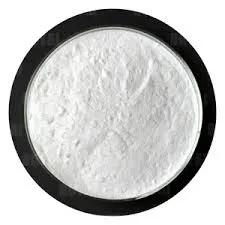
พ.ย. . 15, 2024 14:41 Back to list
buy hydroxypropyl methylcellulose
Understanding Hydroxypropyl Methylcellulose Uses and Benefits
Hydroxypropyl Methylcellulose (HPMC) is a versatile cellulose ether widely used in various industries, including pharmaceuticals, food, construction, and personal care. Known for its unique properties, HPMC serves as an essential ingredient in many products, offering a blend of functionality, safety, and ease of use. In this article, we will explore the characteristics, applications, and benefits of hydroxypropyl methylcellulose, shedding light on why it is increasingly sought after in the market.
What is Hydroxypropyl Methylcellulose?
HPMC is a non-ionic, water-soluble polymer derived from cellulose, the natural polymer found in plant cell walls. The chemical modification of cellulose results in a compound with unique properties, such as improved solubility in water, emulsifying, thickening, and film-forming capabilities. These characteristics make HPMC a valuable ingredient across various sectors.
Applications of Hydroxypropyl Methylcellulose
1. Pharmaceuticals In the pharmaceutical industry, HPMC is profoundly utilized as a binder, film former, and controlled-release agent in tablet formulations. Its ability to form gels and retain moisture enhances drug release profiles, ensuring that medications are effective and stable over extended periods.
2. Food Industry As a food additive, HPMC serves as a thickening agent, stabilizer, and emulsifier. It is commonly found in gluten-free products, where it helps mimic the texture of gluten, improving the quality and shelf-life of food items. HPMC is also used in sauces, dressings, and dairy products to enhance viscosity and stability.
3. Construction In the construction sector, HPMC is employed as an additive in cement, mortars, and tile adhesives. Its water retention properties prevent rapid drying, improving workability and providing better adhesion. Additionally, it enhances the performance of construction materials, making them more efficient and durable.
buy hydroxypropyl methylcellulose

4. Personal Care Products HPMC is also found in various personal care and cosmetic products, including lotions, creams, and shampoos. It serves as a thickening agent, stabilizer, and emulsifier, helping to improve texture and application. Its non-toxic and biodegradable nature makes it a preferred choice for many manufacturers focusing on eco-friendly formulations.
Benefits of Hydroxypropyl Methylcellulose
- Versatility HPMC's diverse applications across multiple industries attest to its versatility. Whether in pharmaceuticals, food, or construction, its adaptability allows manufacturers to cater to various market needs.
- Non-toxic and Biodegradable One of the key advantages of HPMC is its non-toxic nature. It is safe for use in food and pharmaceuticals, giving consumers peace of mind about the products they are using. Furthermore, being biodegradable aligns with the growing trend towards environmental sustainability, making HPMC a more conscience-friendly choice.
- Improved Product Stability In various formulations, HPMC helps enhance the stability of products. In pharmaceuticals, it controls the release of active ingredients, while in food products, it prevents separation of ingredients, ensuring a consistent texture and flavor.
- Cost-effectiveness HPMC offers a cost-effective solution for manufacturers. Its multifunctionality allows companies to use it in place of multiple additives, reducing production costs and simplifying formulations.
Conclusion
Hydroxypropyl Methylcellulose is a significant component in numerous industries, celebrated for its versatility, safety, and ability to enhance product performance. As consumers increasingly prioritize quality and sustainability, HPMC is poised to grow in popularity. Whether you’re a manufacturer looking for reliable and effective additives or a consumer interested in understanding the ingredients in your products, awareness of hydroxypropyl methylcellulose’s role can lead to informed choices. With its myriad applications and benefits, HPMC remains an integral part of modern formulation practices, shaping the future of various markets.
-
Versatile Hpmc Uses in Different Industries
NewsJun.19,2025
-
Redispersible Powder's Role in Enhancing Durability of Construction Products
NewsJun.19,2025
-
Hydroxyethyl Cellulose Applications Driving Green Industrial Processes
NewsJun.19,2025
-
Exploring Different Redispersible Polymer Powder
NewsJun.19,2025
-
Choosing the Right Mortar Bonding Agent
NewsJun.19,2025
-
Applications and Significance of China Hpmc in Modern Industries
NewsJun.19,2025







